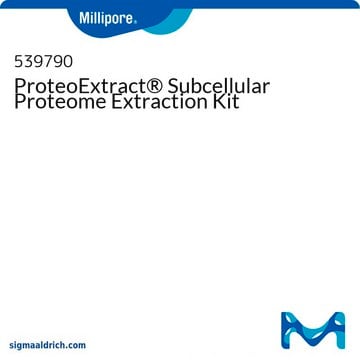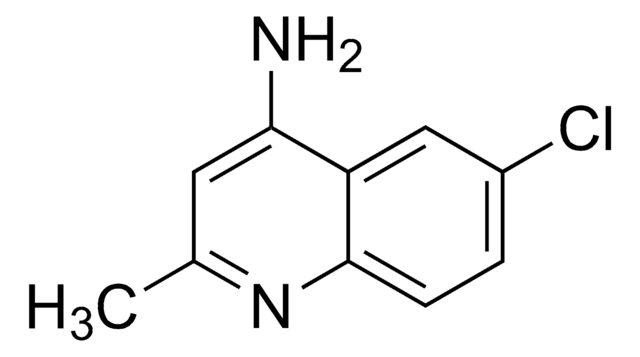P0113
PQ401
≥98% (HPLC), powder
Synonyme(s) :
IGF-1R Inhibitor II, N-(5-Chloro-2-methoxyphenyl)-N′-(2-methylquinolin-4-yl)urea
About This Item
Produits recommandés
Niveau de qualité
Pureté
≥98% (HPLC)
Forme
powder
Couleur
white
Solubilité
DMSO: >10 mg/mL
H2O: <2 mg/mL
Température de stockage
2-8°C
Chaîne SMILES
COc1ccc(Cl)cc1NC(=O)Nc2cc(C)nc3ccccc23
InChI
1S/C18H16ClN3O2/c1-11-9-15(13-5-3-4-6-14(13)20-11)21-18(23)22-16-10-12(19)7-8-17(16)24-2/h3-10H,1-2H3,(H2,20,21,22,23)
Clé InChI
YBLWOZUPHDKFOT-UHFFFAOYSA-N
Application
- an insulin growth factor-1 receptor (IGF-IR) inhibitor in H1299 cells to test its effect on migration suppression
- a reference inhibitor in dose-response measurements studies
- an IGF1R inhibitor in sirtuin 6 (SIRT6)-deficient cardiomyocytes to test its effect on hypertrophy inhibition
Actions biochimiques/physiologiques
Caractéristiques et avantages
Code de la classe de stockage
11 - Combustible Solids
Classe de danger pour l'eau (WGK)
WGK 3
Point d'éclair (°F)
Not applicable
Point d'éclair (°C)
Not applicable
Équipement de protection individuelle
Eyeshields, Faceshields, Gloves, type P2 (EN 143) respirator cartridges
Certificats d'analyse (COA)
Recherchez un Certificats d'analyse (COA) en saisissant le numéro de lot du produit. Les numéros de lot figurent sur l'étiquette du produit après les mots "Lot" ou "Batch".
Déjà en possession de ce produit ?
Retrouvez la documentation relative aux produits que vous avez récemment achetés dans la Bibliothèque de documents.
Articles
We offers many products related to InsR for your research needs.
Discover Bioactive Small Molecules for Kinase Phosphatase Biology
Notre équipe de scientifiques dispose d'une expérience dans tous les secteurs de la recherche, notamment en sciences de la vie, science des matériaux, synthèse chimique, chromatographie, analyse et dans de nombreux autres domaines..
Contacter notre Service technique








